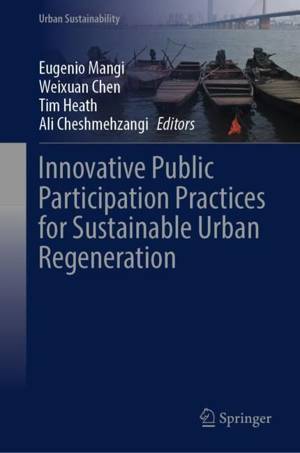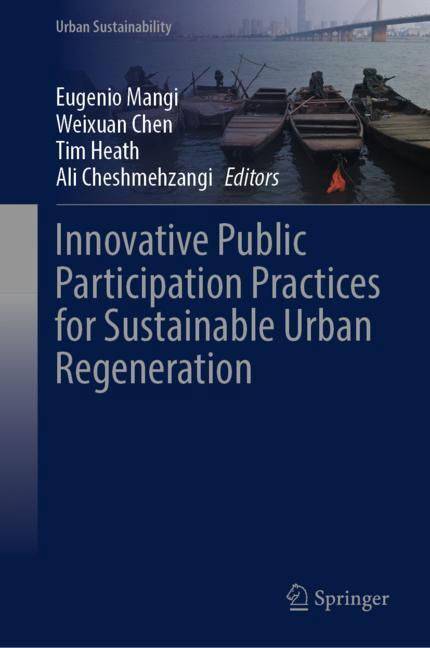
- Afhalen na 1 uur in een winkel met voorraad
- Gratis thuislevering in België vanaf € 30
- Ruim aanbod met 7 miljoen producten
- Afhalen na 1 uur in een winkel met voorraad
- Gratis thuislevering in België vanaf € 30
- Ruim aanbod met 7 miljoen producten
Innovative Public Participation Practices for Sustainable Urban Regeneration
Omschrijving
This book analyzes the adoption of stakeholders' engagement in various fields and scales while providing the readers with an international outlook of the topic. In the contemporary processes of urban development, regeneration is becoming a relevant way to limit the occupation of new land and to enhance the existing spatial, social, and ecological dimensions of specific parts of the city. It generally entails the engagement of different groups of stakeholders and users at various levels--e.g., institutional and private--who carry on their own agendas while conveying a wide range of interests and values to safeguard. At the same time, despite indications of a significant increase in its implementation under various forms and in multiple contexts in the last twenty years, participatory mechanisms have not been without challenges and barriers due to several factors, including facilitators' poor negotiation and communication practices, and consequently misinterpretation of the values at stake made by the parties involved, or obstructionism and gridlocks carried on by the different stakeholders. The narrative of the collection is structured in four sections The contributions elaborate on innovative participatory patterns, how they are/might be entangled with the different stages of regeneration projects, in what measure they have contributed to the United Nations sustainability goals, and the potential matters emerging during the negotiation phases. In detail, the four sections are:
1. Public space regeneration
2. Ecological regeneration
3. Built heritage regeneration
4. Informal settlements regeneration.
Finally, this book is a significant asset to urban policy makers, planners, practitioners, and researchers in the architecture and urban studies domain who aim at deepening public participation practices knowledge by comparing different experiences.
Specificaties
Betrokkenen
- Uitgeverij:
Inhoud
- Aantal bladzijden:
- 155
- Taal:
- Engels
- Reeks:
Eigenschappen
- Productcode (EAN):
- 9789819995943
- Verschijningsdatum:
- 15/03/2024
- Uitvoering:
- Hardcover
- Formaat:
- Genaaid
- Afmetingen:
- 156 mm x 234 mm
- Gewicht:
- 417 g

Alleen bij Standaard Boekhandel
Beoordelingen
We publiceren alleen reviews die voldoen aan de voorwaarden voor reviews. Bekijk onze voorwaarden voor reviews.










